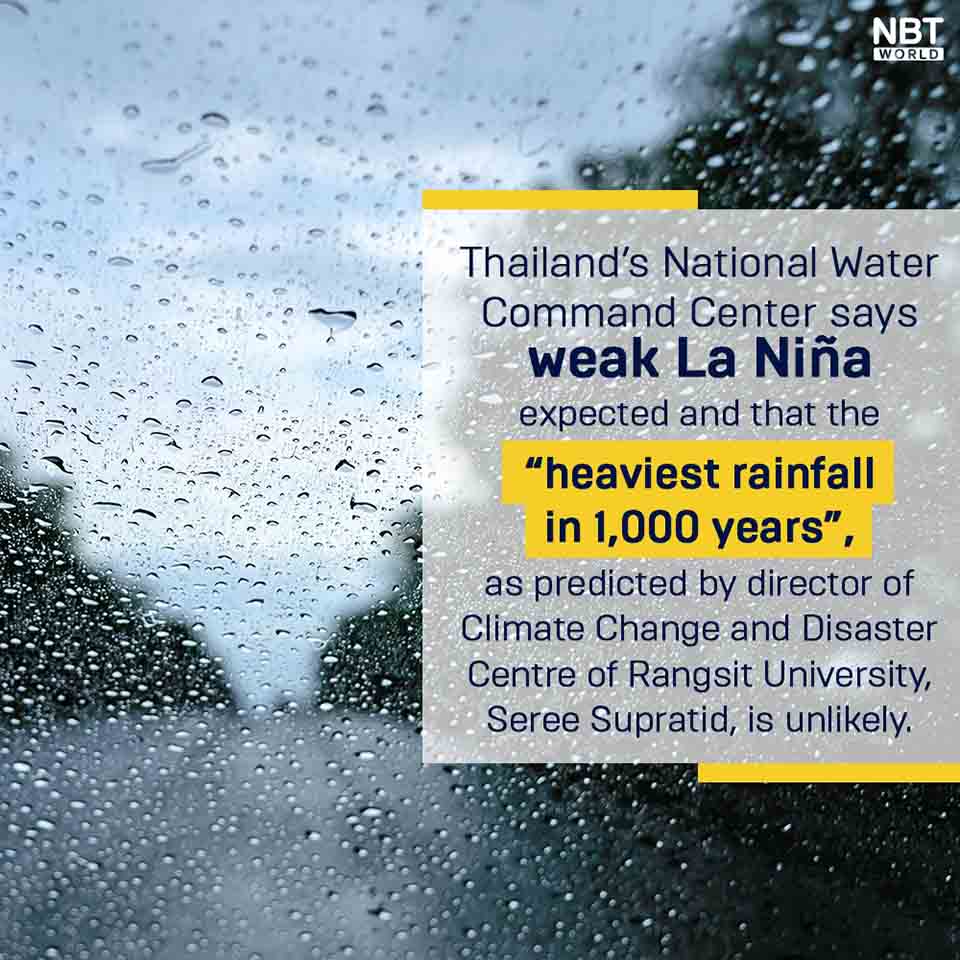
According to the Office of National Water Resources, Thailand will not see record-breaking torrential rain due to a “La Nina” oscillation later in the year, as claimed by director of Climate Change and Disaster Centre of Rangsit University, Seree Supratid, who warned authorities to prepare for much heavier rainfall due to the La Nina phenomenon.
Director Seree said it could bring the heaviest precipitation in a millennium across the globe, as evidenced by the floods in China and Western Europe.
However, secretary-general, Somkiat Prajamwong of the ONWR said authorities are working with the Thai Meteorological Department and Hydro Informatics Institute to monitor the progress of the weather phenomenon.
His warning prompted Deputy Prime Minister Prawit Wongsuwon to instruct authorities to look at La Nina’s impact on Thailand, especially Bangkok.
Mr Somkiat said though the TMD expects this year’s La Nina to be milder, it will bring more rain to the South in November and December.

Heavy rainfall will come around September and October to the lower North, Central Plains, Northeast and East.
The department forecast said most of the rain is expected to arrive in September, with average precipitation expected to be around 260 millimeters.
As such, Mr Somkiat said, it is unlikely that the rainfall in months when La Nina is most active would exceed the historical record of 350mm of rain in a day.
Mr Somkiat also said tropical storm Cempaka is bolstering the southwesterly monsoon, which will add about 1.83 billion cubic metres to dams and reservoirs across the country, including the Northeast.
At present, dams and reservoirs across the country hold an estimated total of 36.44 billion cubic metres of water, or about 44% of total storage capacity, he said.
 |
 |
 |





